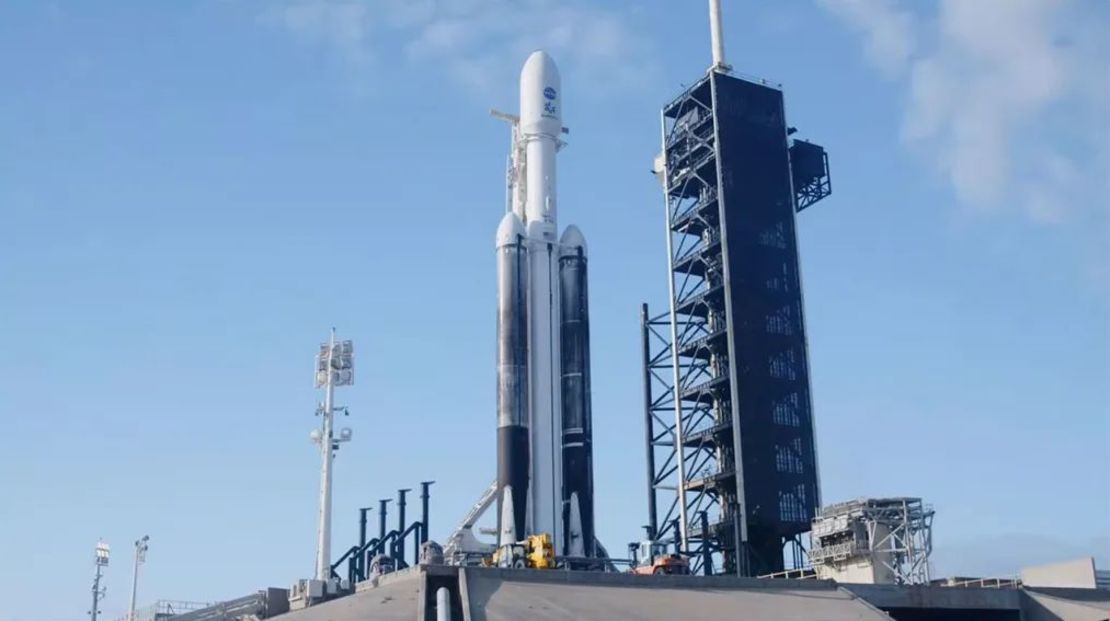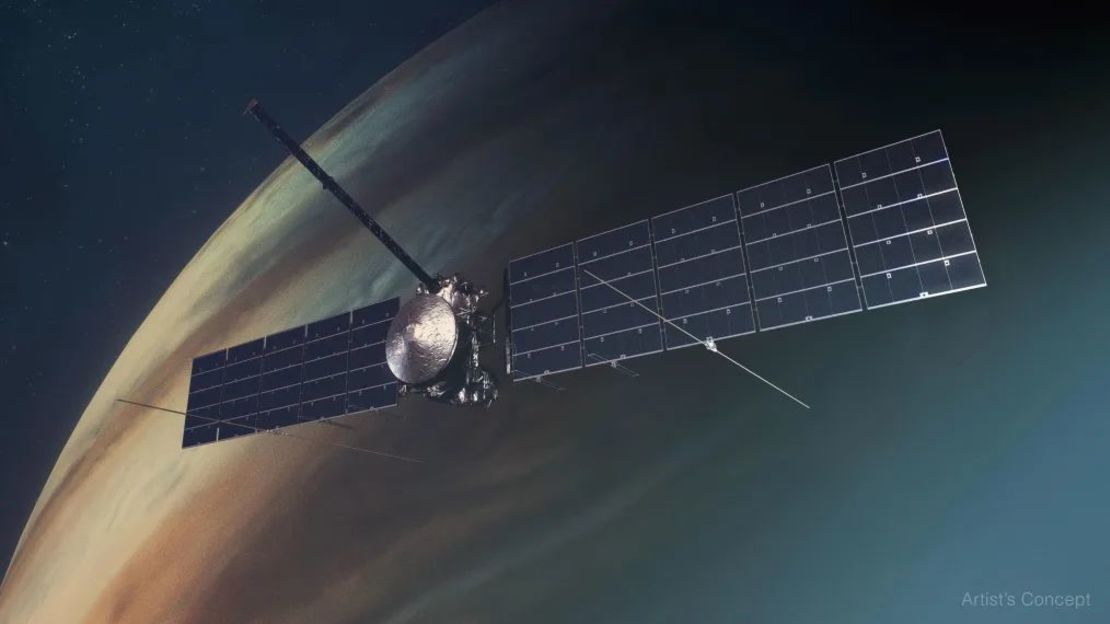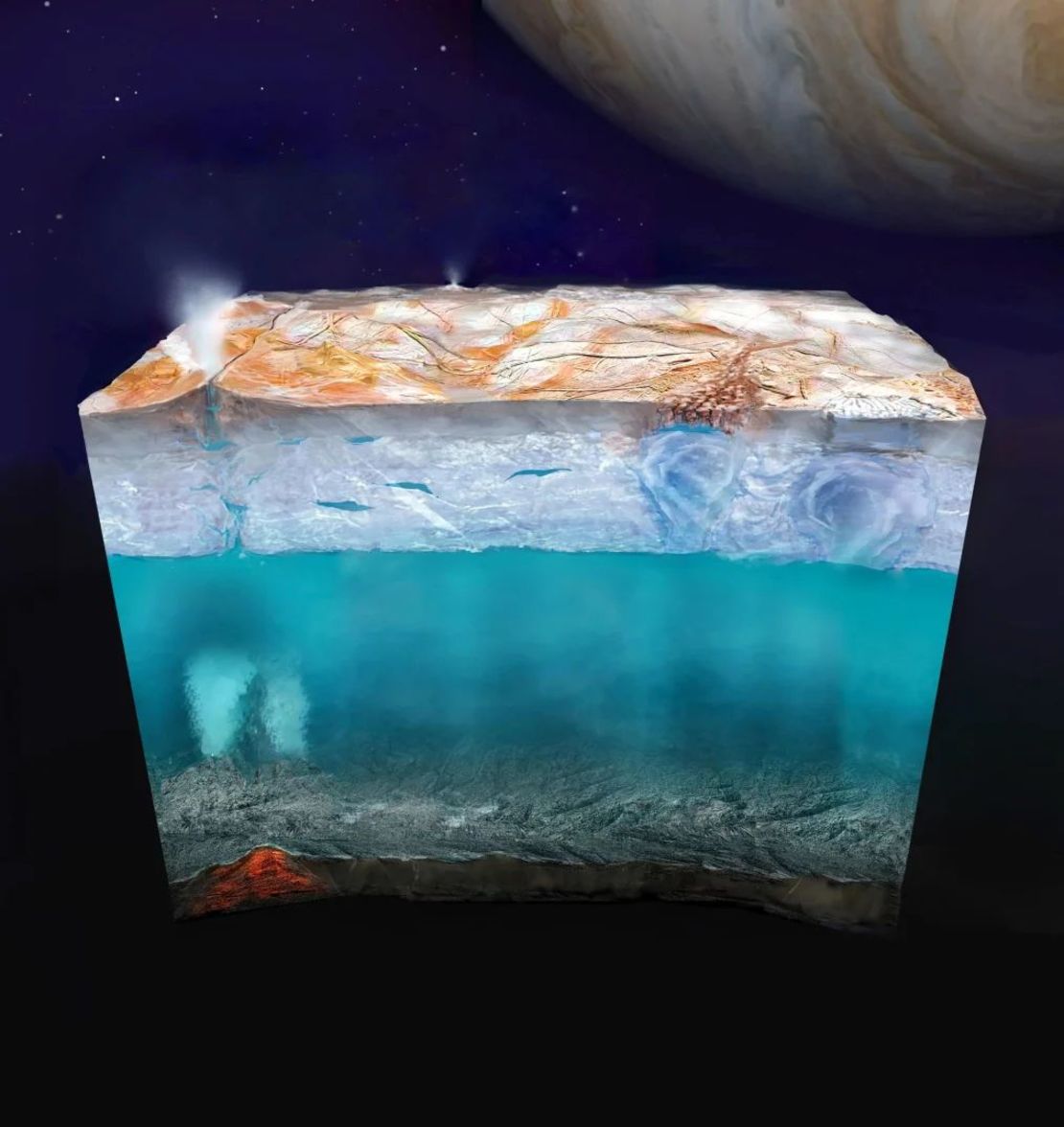(CNN) – A mission to study one of the most promising environments in the solar system that could be suitable for life on the verge of launching.
NASA’s Europa Clipper space probe, designed to explore its namesake moon, Jupiter’s moon Europa, is expected to lift off aboard a SpaceX Falcon Heavy rocket on Monday at 12:06 p.m. ET from NASA’s Kennedy Space Center in Florida. The event will be streamed live on NASA’s website and coverage will begin at 11:00 a.m.
Weather conditions are 95 percent suitable for liftoff, according to Mike McAleenan, a meteorologist with the U.S. Space Force’s 45th Weather Squadron.
If the Europa Clipper does not launch on Monday, there are chances of a launch until November 6. Each launch opportunity is instantaneous, meaning a launch can only happen at one specific time each day, according to Tim Dunn, senior launch manager for NASA’s Launch Services Program.
The long-awaited liftoff, scheduled for October 10, was postponed due to Hurricane Milton. However, teams at the center assessed launch facilities after the storm and evacuated the spacecraft to return to the launch pad.
Europa Clipper will be NASA’s first spacecraft dedicated to studying the ice-covered ocean world of our solar system, aiming to determine whether the Moon could be habitable as we know it.
Clipper will carry nine instruments and a gravity experiment to explore the ocean beneath Europa’s thick ice sheet. It is estimated that the Moon’s ocean contains twice as much liquid water as Earth’s oceans.
“The instruments are working together to answer our most pressing questions about Europa,” Robert Pappalardo, mission project scientist at NASA’s Jet Propulsion Laboratory in Pasadena, California, said in a statement. “We will learn what makes Europa special, from its core and rocky interior to its shell of ocean and ice, to its very thin atmosphere and surrounding space environment.”
The spacecraft also carries more than 2.6 million names submitted by people from countries around the world and a poem by American poet Ada Lemon.
The $5.2 billion mission began as an idea in 2013, but the road to launch was not without challenges.
In May, engineers discovered that the spacecraft’s components may not be able to withstand Jupiter’s harsh radiation environment. However, the team was able to complete the necessary tests on time and receive approval in September to proceed with the launch, avoiding a 13-month launch delay without any changes to the mission plan, objectives or trajectory.
“There has never been a more difficult year to get Europa Clipper to the finish line,” said Curt Niebuhr, Europa Clipper program scientist.
“But through it all, the one thing we never doubted was that it would be worth it,” Niebuhr said. “It’s an opportunity to explore, not a world that would have been habitable billions of years ago, but a world that would have been habitable today; an opportunity to make the first exploration of this new kind of world that we’ve recently discovered, called an oceanic world, which is completely submerged.” “And covered in an ocean of liquid water completely different from anything we have seen before, this is what awaits us in Europe.”

After launch, the spacecraft will travel 1.8 billion miles (2.9 billion kilometers) and is expected to reach Jupiter in April 2030. Along the way, the spacecraft will fly around Mars and then Earth, using each planet’s gravity to help the spacecraft use less fuel. And gaining speed on its journey to Jupiter.
Europa Clipper will work alongside Jupiter, or the Jupiter Icy Moons Explorer spacecraft, launched by the European Space Agency in April 2023, which will arrive to study Jupiter and its largest moons in July 2031.
Clipper, the largest spacecraft NASA has ever built for a planetary mission, is 30.5 meters wide (wider than a basketball court) thanks to its solar panels. The massive panels will help absorb enough sunlight to power the spacecraft’s instruments and electronics as it explores Europa, which is five times closer to the sun than Earth.
Once it arrives, the spacecraft will spend its mission conducting 49 flybys of Europa rather than landing on the moon’s surface.
Initially, mission teams feared Clipper would not be able to withstand Jupiter’s harsh environment, because the giant planet’s magnetic field (which traps and accelerates charged particles and generates radiation that destroys spacecraft) is 20,000 times stronger than Earth’s magnetic field. But engineers have found a way around this problem.
Each pass by Europa, scheduled every two to three weeks, will see the spacecraft spend less than a day exposed to Jupiter’s harsh radiation before departing again. The time between steps can help the spacecraft’s transistors, which help control the flow of electricity in the spacecraft, recover from radiation exposure.

Meanwhile, a specially designed dome made of titanium and aluminum will protect the spacecraft’s sensitive electronics from radiation.
Finally, the flights will take Clipper to an altitude of 25 kilometers from the surface, each time flying over a different place in Europe. This strategy will allow the spacecraft to map almost the entire Moon.
Once the mission is complete, the spacecraft’s journey could end with a collision with the surface of Ganymede, Jupiter’s largest moon, although that has not yet been determined.
Europa Clipper is not designed to search for evidence of life on Europa, but will use a series of instruments. Europa Clipper will soon be launched to explore a potentially habitable moon in our solar system to see if life is possible within an ocean on another planet. From our solar system.
Astronomers believe that the necessary ingredients for life, such as water, energy and the right chemistry, could already be present on Europa. The probe can collect evidence to see if these components coexist in a way that makes the lunar environment habitable.
The mission will investigate the exact thickness of the icy crust surrounding the Moon and how this icy exterior interacts with the ocean beneath it, as well as characterize the Moon’s geology. Scientists are interested in knowing the exact composition of the ocean and what causes the plumes previously observed rising through ice cracks and ejecting particles into space. They also want to determine whether material from Europa’s surface is leaking into the ocean.
To conduct extensive research, Europa Clipper is equipped with cameras and spectrometers to take high-resolution images and create maps of the moon’s surface and thin atmosphere. The spacecraft also carries a thermal instrument to detect where there is ice plume activity and where the ice is warmer. The magnetometer will study the moon’s magnetic field and confirm the presence of Europa’s ocean, as well as its depth and salt content.
Ice-penetrating radar will search beneath the outer layer, which is estimated to be 15 to 25 kilometers thick, for evidence of the moon’s ocean.


“Proud web fanatic. Subtly charming twitter geek. Reader. Internet trailblazer. Music buff.”







More Stories
The final moments of the “Halloween Comet” were captured by the SOHO spacecraft
University of Michigan scientists have discovered what’s inside a black hole
NASA shares the scariest images of the sun in the lead-up to Halloween